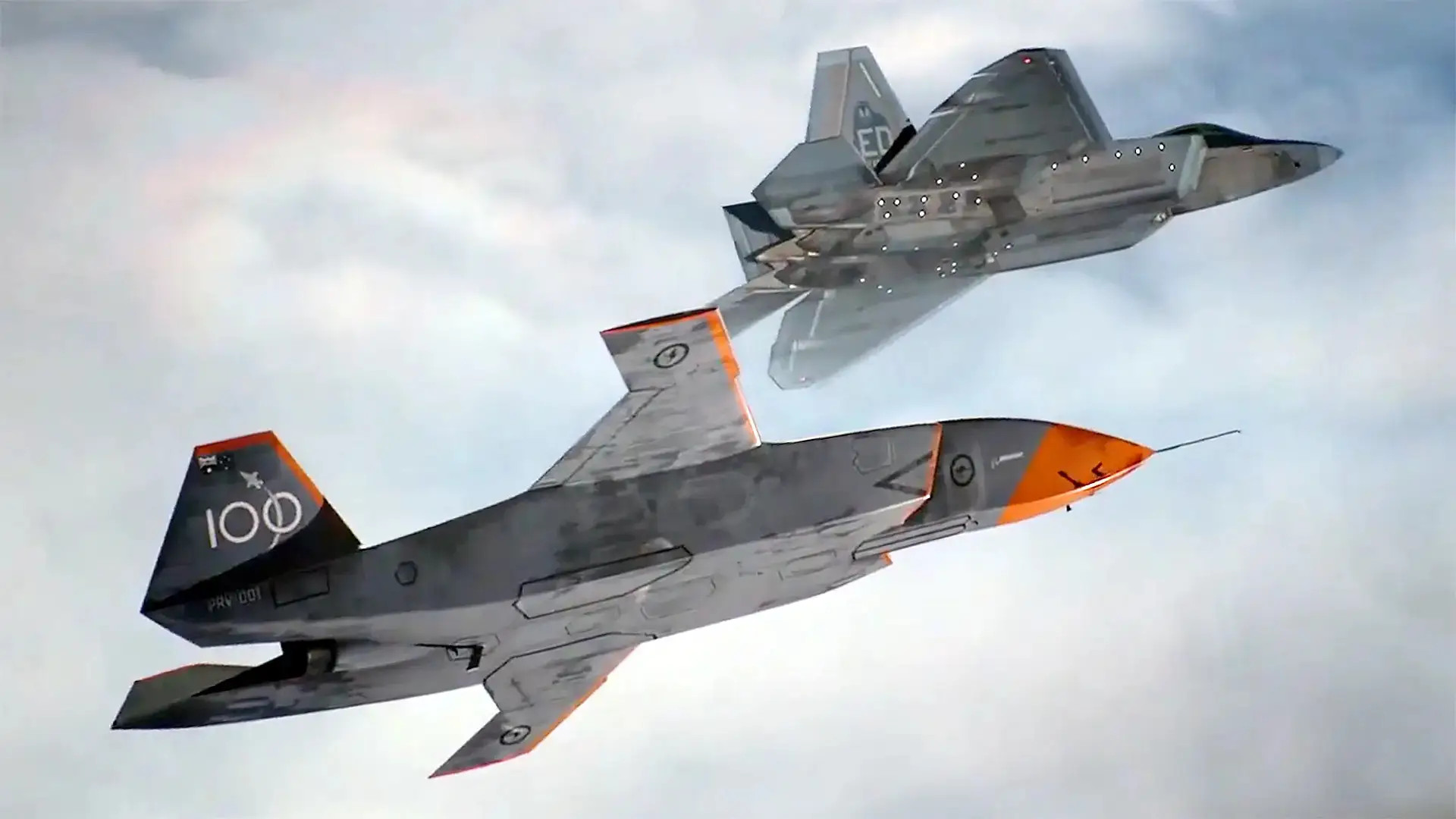Major new details about the U.S. Air Force’s Collaborative Combat Aircraft program emerged at the Air & Space Forces Association’s recent annual Warfare Symposium. This includes a clearer picture of the effort’s autonomy goals, aggressive production plans, and future operational impacts. Though questions remain about the capabilities and costs of these future uncrewed aircraft, the CCA program looks set to have a number of disruptive impacts that could fundamentally reshape the Air Force.
As it stands now, the Air Force is planning to acquire at least 1,000 Collaborative Combat Aircraft (CCA) drones, and potentially more, as part of an initial tranche known currently as Increment One. Five companies – Boeing, General Atomics, Lockheed Martin, Northrop Grumman, and Anduril – are currently working on Increment One air vehicle designs. Dozens of additional firms are supporting the program through the development of autonomous technologies, sensors and other mission systems, command and control capabilities, and more. A down-select on the air vehicle side of the first increment, from the initial five contractors down to two or three, is expected later this year. The goal is to have a CCA design actually in production by 2028.
Increment One CCAs are expected, at least initially, to operate very closely with stealthy crewed combat jets, including a new sixth-generation design now under development as part of the Air Force’s larger Next Generation Air Dominance (NGAD) initiative, as well as certain F-35As. CCAs could be partnered with other crewed aircraft and operate more independently, in the future.

The Air Force also expects formal work on a second batch of CCA drones, known as Increment Two, to kick off in the 2025 Fiscal Year. This second phase of the program, the core requirements for which are still largely undefined, could include foreign participation. The Air Force is already collaborating actively with the U.S. Navy and Marine Corps on various aspects of the CCA program and relevant technologies, including the ability to exchange control of the drones seamlessly between services during future operations. There are plans to bring U.S. Special Operations Command (SOCOM) into this inter-service partnership later this year, as well. You can read more about all of this here.
Capabilities And Cost
The Air Force has so far provided limited details about the requirements and cost projections for the Increment One CCAs. From what has been disclosed to date, the service looks to be leaning toward picking a design that will feature less range and higher performance than had originally been expected, that will have a unit price at the top of earlier projected price ranges, as The War Zone has previously explored in detail.
In terms of cost, specifically, Secretary of the Air Force Frank Kendall has said that each of the initial batch of CCAs will cost between one-quarter and one-third of the unit price of an F-35 stealth fighter. This would be between around $20.5 and $27.5 million, based on publicly available information.
“Range and speed is going to size the platform for you. It’s physics. … the size of that platform is going to have a cost associated with it,” David Alexander, president of General Atomics Aeronautical Systems, said at a panel discussion at this year’s AFA War Symposium on February 13. “But that’s not the whole story.”
Alexander explained that, at least from General Atomics’ perspective, an essential part of the Increment One CCA development process has been to strip out all sorts of things associated with manned operation from the design, both on the aircraft and in terms of support requirements. This, in turn, opens up new trade space for how to meet the Air Force’s desired capability requirements, while still keeping costs low.

Robert Winkler, the vice president of Corporate Development and National Security Programs at drone maker Kratos, made similar points while speaking alongside Alexander. Kratos is not among the five companies currently on contract to develop CCA designs under Increment One, but the company is vying to participate in Increment Two.
“What we’re missing, though, is controlling the cost. And so if we want to have a reasonably costed aircraft, we can’t go with exquisite sensors. But we want that same capability,” Winkler said. “So we have to figure out a way to bring the sensor costs down, maybe give up a little bit of performance, but bring it up from the level that you would get from a completely expandable weapon.”
“We know how to build manned aircraft. And we know how to build unmanned aircraft. We got to make sure that we’re building for the right thing,” Winkler continued. “So if you tried to build a CCA like a manned aircraft, it’s gonna cost like a manned aircraft.”
Winkler specifically cited the case of the MQ-25 Stingray carrier-based tanker drone that Boeing is developing for the U.S. Navy as an example of what to avoid, saying that its unit cost is “about eight million dollars less than a KC-46″ crewed aerial refueling tanker. The Navy currently projects the average unit for the 76 MQ-25s it plans to buy to be around $150 million, according to the service’s budget documents. In its budget request for the 2024 Fiscal Year, the Air Force pegged the unit price of a KC-46A at just over $163 million.
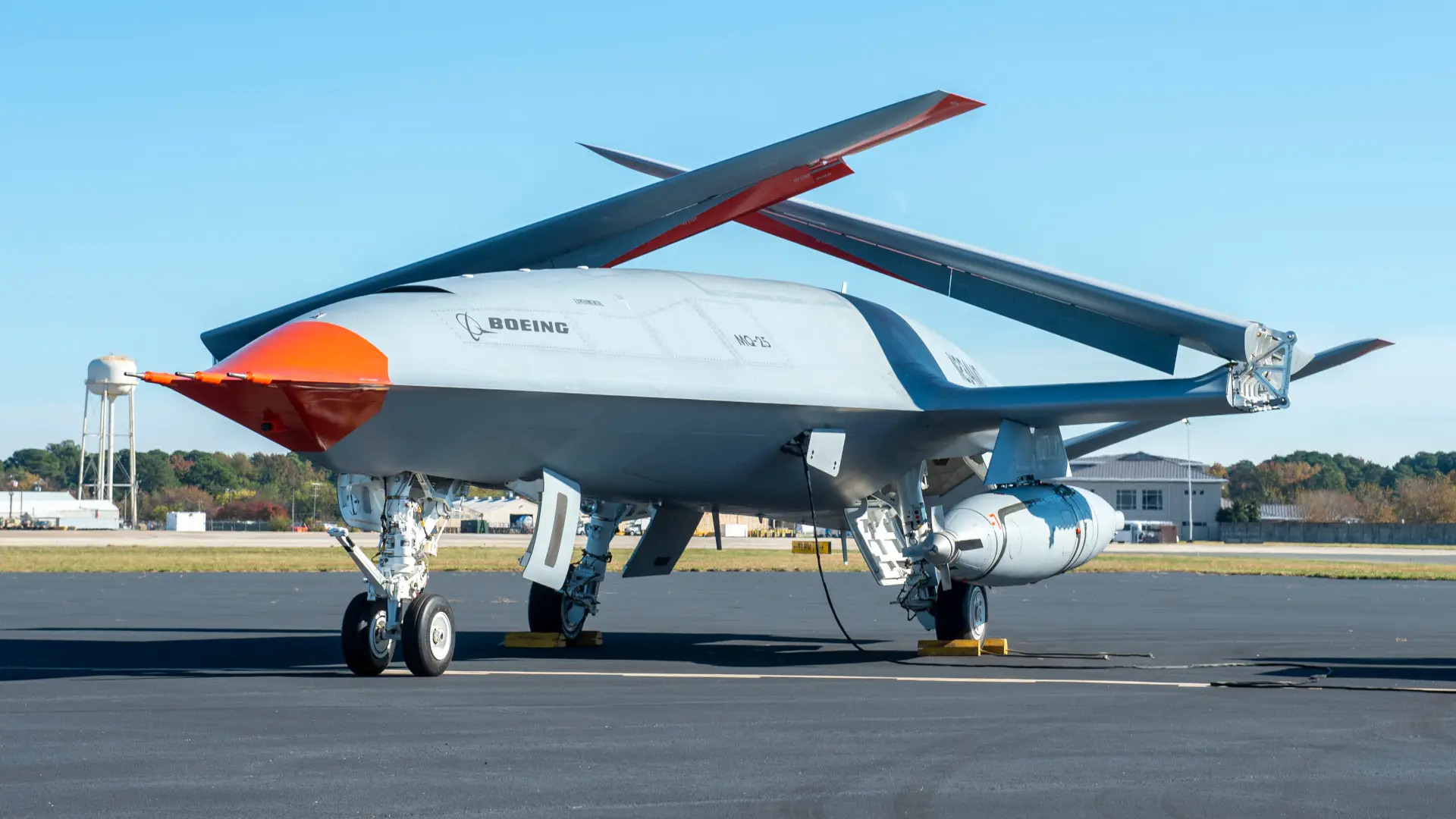
Beyond the design of the Increment One CCAs, new details about the actual degree of autonomy that these drones are expected to have, or lack thereof, emerged last week.
“The hardest part is the autonomy piece. … the more complex the autonomy that you expect the system and platform increment to perform, the harder it is,” Andrew Hunter, assistant secretary of the Air Force for Acquisition, Technology, and Logistics, said at a media roundtable that The War Zone and others attended on the sidelines of the 2024 AFA Warfare Symposium. “I will say we have a high degree of confidence that we can deliver useful autonomy in increment one.”
“We would not be proceeding at the pace that we are … if we didn’t believe that we would be able to deliver useful autonomy in the same timeframe as we’re fielding that air vehicle,” Hunter continued. “But it will be more limited than I think what you’ll see down the road. Autonomy will grow … more capable over time.”
The Air Force has also put a heavy emphasis on open architectures and mission systems, which could lead to significant changes to the overall capabilities of the Increment One CCAs as time goes on. The service, in cooperation with industry, has already been making advancements in its ability to rapidly train and retrain autonomous algorithms in entirely digital environments to help speed up the development and implementation of new functionality, as you can learn more about here.
“I think it’s really key to moving forward, especially with autonomy and AI [artificial intelligence] that … we want to bring forward. …. the key to that is going to be open mission systems, open architecture. And that includes command and control. And that also includes the sensor system,” General Atomics’ Alexander said at the panel discussion last week. “If you bring a new capability on and you have to go through the whole air worthiness cycle every time you go through it, you’re gonna fail, but if you can bring new capability and new skills quick, without going through an airworthiness cycle every time, that’s when you’re going to really grow your autonomy, your AI, over time.”
Alexander highlighted that General Atomics has already been doing autonomy and other relevant research and development work using surrogates, including the company’s stealth Avenger drones. The Air Force has been working with a number of other contractors in recent years on similar relevant developments through tangential programs like Skyborg, as you can read more about here.
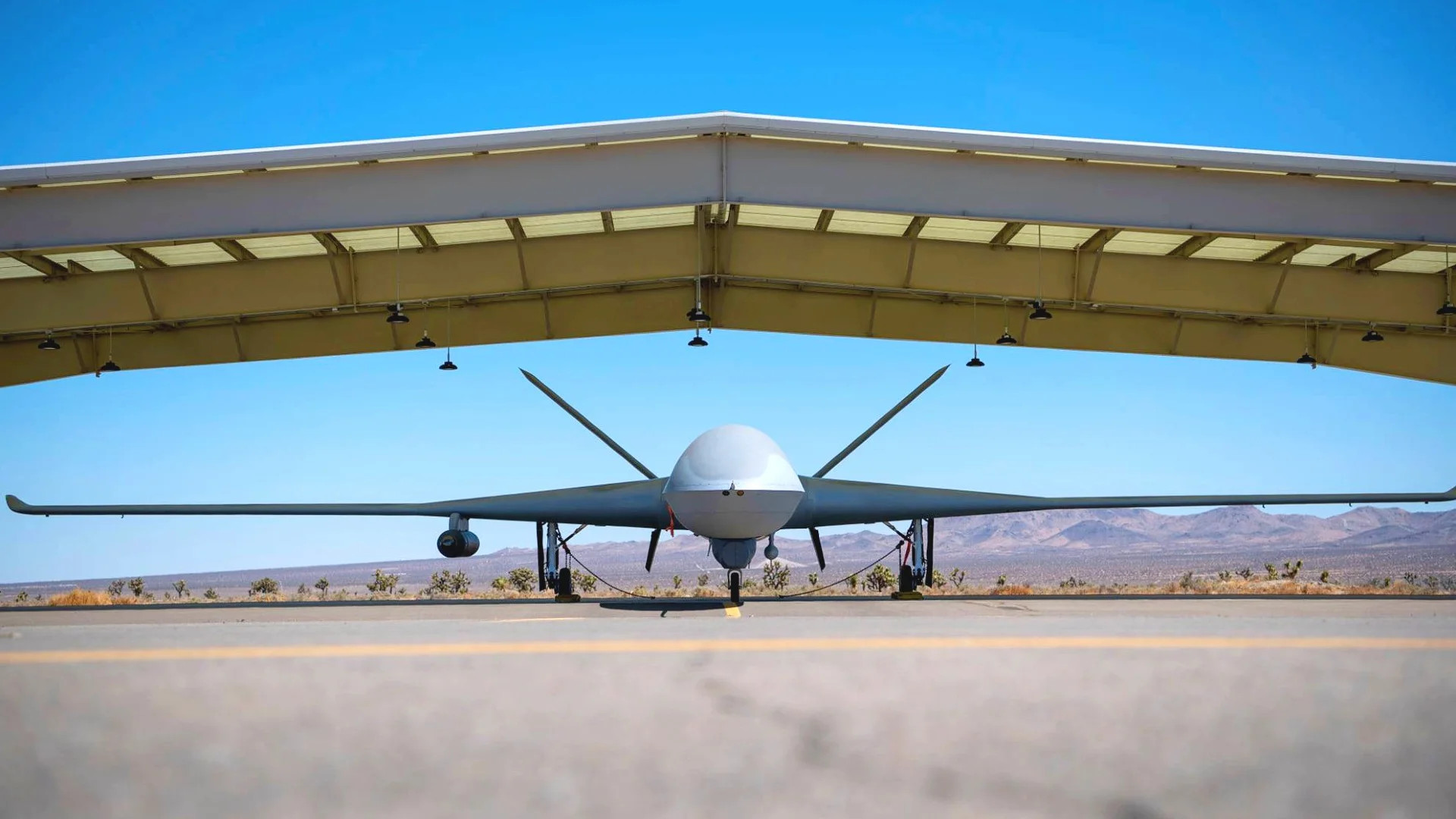
In Alexander’s opinion, “we’re not that far away from the autonomy of half a dozen or a dozen CCAs going down range first on their own” using mesh networks, “talking to each other” about “who’s going to shoot that target” at a rate of “50 times a second.”
The General Atomics executive did stress that a human would be in the loop in these contexts for the foreseeable future, but cited demands for higher-level crewed-uncrewed teaming as a major potential stumbling block to implementing autonomous capabilities. He also warned against getting overly “bogged down in the safety process” in autonomy development. The benefits of the ability of highly autonomous uncrewed aircraft to work through heavily-defined decision cycles far faster than human pilots, and to perform tasks within a completely different risk calculus, is something The War Zone has explored in detail in the past.
Whatever the final requirements for the Increment One CCAs in terms of the air vehicle design and their mission systems, including their autonomous capabilities, turn out to be, this can only have an impact on the unit cost of the drones.
“I think we got to be careful with low cost. … [CCA] needs to be attrition tolerant, attritable … [but] you gotta make sure that you’re not producing a lot of something that will fail, because nobody will want that, as well,” General Atomics’ Alexander said last week. Attritable, a term the Air Force has been trying to move away from, can be very generally defined as a system that is cheap enough that commanders would be willing to lose them in higher-risk scenarios, but would still have relevant capabilities to perform those missions.
“You have to get the reliability up,” he added. “And you have to get… preventative maintenance and scheduled maintenance down and out … And so I think we’ve got to keep an eye on the big picture as far as cost goes. And there’s a balance.”

At another panel discussion at the AFA Warfare Symposium last week, Air Force Maj. Gen. R. Scott Jobe, director of Force Design, Integration, and Wargaming and deputy chief of Staff for Air Force Futures, pointed out that the service is looking at the CCA cost in ways beyond the individual price of each drone, too.
“The CCA kind of represents a whole lot of different capabilities that you can explore [for] achieving and closing those kill chains … [and] you can potentially do it in a much more cost-effective way [in terms of] cost per effect,” Jobe said. “And so then you can have that discussion … on making those trades, trades in airspeed and altitude, … what kinds of avionics or sensors it has on it, or doesn’t… I mean, you could conceivably have a fairly simple flying tracker that fires cruise missiles kind of thing that doesn’t have a whole lot of advanced systems on it.”
He further highlighted how CCAs could lead to different kinds of cost savings because there won’t need to be anyone in the cockpit. The Air Force continues to face a serious shortage of pilots despite years of exploring ways to improve the training pipeline and otherwise mitigate this shortfall. As already noted, CCAs will still require some level of human interaction and the Air Force has no plans to stop using crewed aircraft any time soon. At the same time, personnel requirements are expected to be lower for CCAs than they would be for traditional flying units within the Air Force.

At the media roundtable last week, Assistant Secretary of the Air Force Hunter added that there could also potentially be a very different set of requirements overall for the Increment Two CCAs. He further stressed that the process of narrowing down those requirements hasn’t even begun. The Air Force has said in the past that future tranches of CCAs could be radically different in both form and function from those acquired in Increment One. The second tranche of CCAs could therefore have substantially different unit prices.
“I think the [cost] spectrum opens up a little bit when we get into increment two,” Air Force Brig. Gen. Jason Voorheis, the Air Force’s program executive officer for Fighters and Advanced Aircraft, said at a panel talk at the AFA Warfare Symposium last week.
Voorheis also talked about the value of ensuring “these assets have the most flexible and modular characteristics and design” so that they can perform most effectively within larger families of future systems and provide for future adaptability in roles and missions.
“Speed-To-Ramp” And Iterative Development
For some time now, “affordable mass” has been the most regularly cited central driver behind the CCA program. This is a concept centered on the need to find lower-cost options to help meet demands for large volumes of combat capacity in a future high-end conflict, such as one in the Pacific against China, as you can read more about here.
A corollary has now emerged in the context of CCA when it comes to actually acquiring this mass, which is currently being referred to as “speed-to-ramp.” This is all about not just accelerating the development of the drones, but of getting them into large-scale production quickly.
“Our focus has been speed-to-ramp,” Assistant Secretary Hunter explained at the roundtable last week.
“So we’ve focused on things that we believe we understand very well and that industry understands very well how to deliver that capability on the accelerated timeframe that we’ve established for Increment One.”
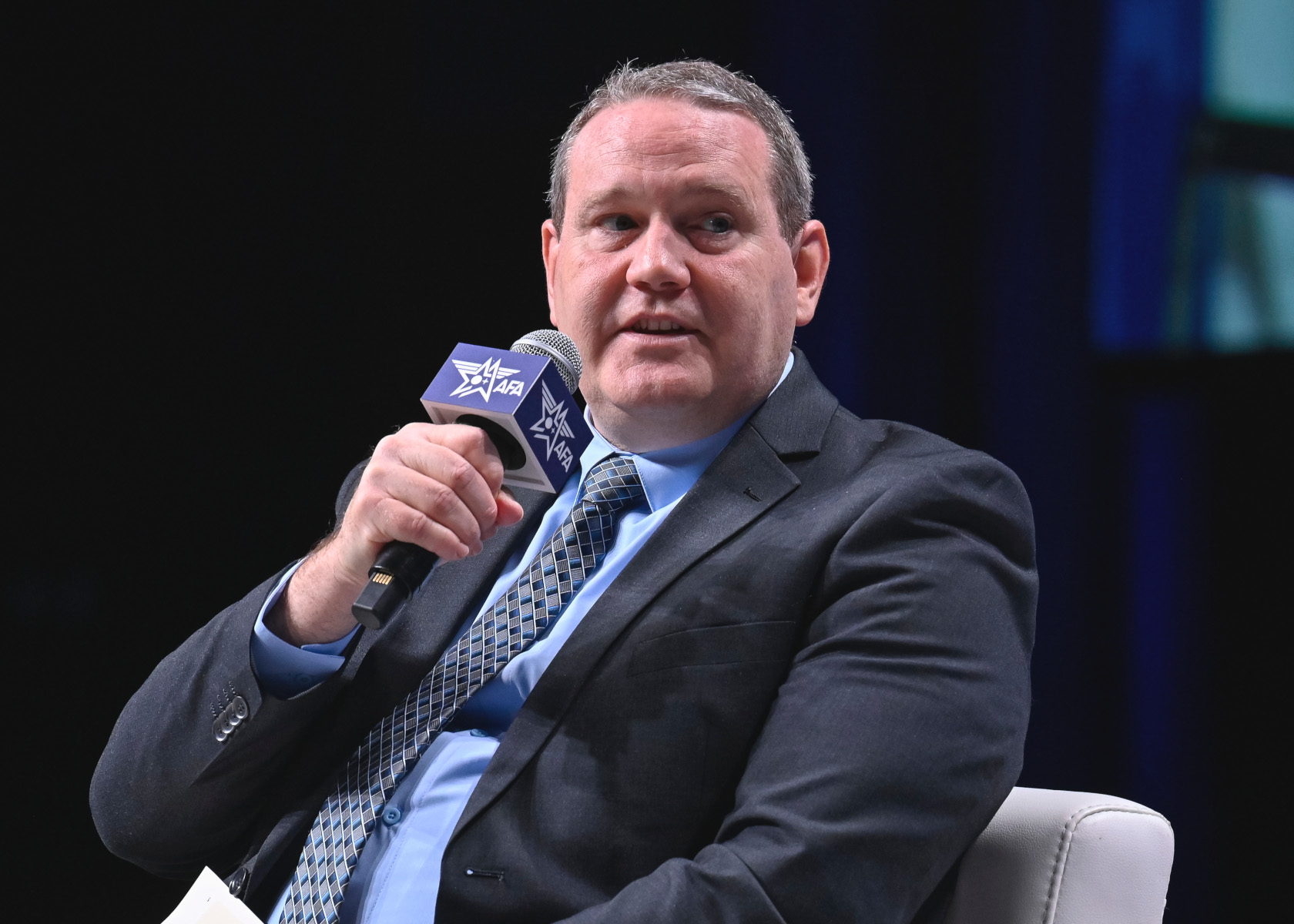
Speaking at the panel talk at last week’s AFA Warfare Symposium, Brig. Gen. Voorheis described Increment One’s progress from the initial concept through the refinement of requirements to the awarding of actual contracts to build “production representative test articles” in the space of around two years as having already shown a “pretty phenomenal pace.”
Voorheis also highlighted that the Air Force owns the open architectures for both mission systems and autonomous capabilities that will go into the CCAs. The service expects this to help expand the available potential industrial base, including smaller companies, by preventing any single firm from developing a so-called “vendor lock” on key underlying elements of the program. Secretary of the Air Force Kendall has been particularly outspoken about how similar issues have negatively impacted the F-35 program over the years.
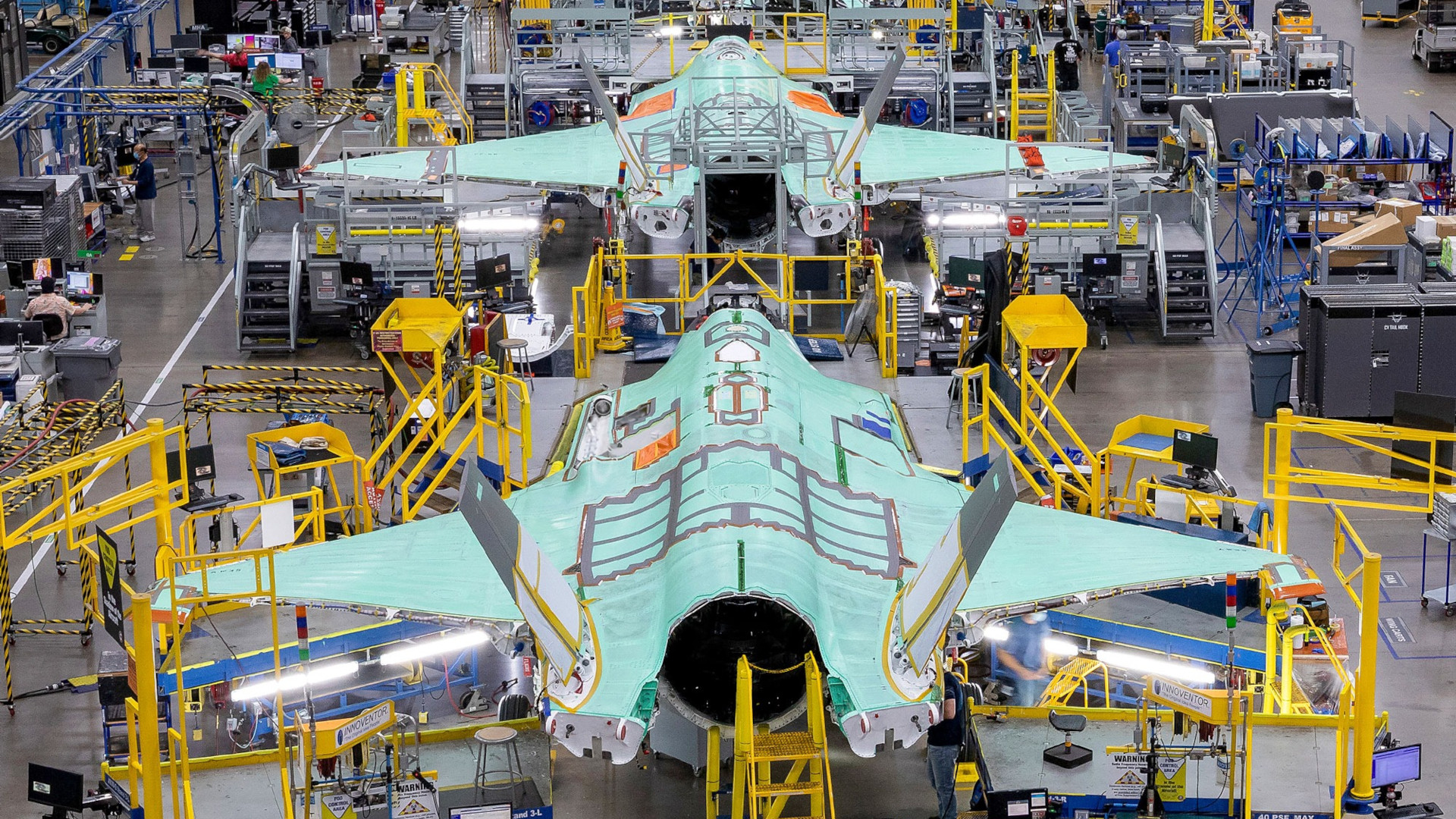
The Air Force, as well as its industry partners, also sees iterative CCA development cycles as being intrinsically linked to realizing accelerated production timelines.
“It’s an iterative process with industry… we really narrowed in on what is Increment One going to do. We talked a lot to industry. What can you really deliver? … this is our timeframe, when we want to get into production. This is our timeframe when we want to have fielded capability,” Assistant Secretary Hunter said last week. “So industry gave us a lot of feedback and said, if that’s what you’re looking for, these are the things we think you can do.”
“We need to make sure that those first prototypes we get to our warfighters are operationally relevant. We need to start with the end in mind, which is we need to figure out how to make potentially 1000s of the aircraft, and to do it very efficiently and quickly,” Tom Jones, president of Northrop Grumman Aeronautics Systems, said at a panel discussion at this year’s AFA War Symposium. “We’re pioneering new ways to get affordable mass out on very short timeframes. That is an exciting prospect.”
At the panel talk on February 13, Northrop Grumman’s Jones specifically touted digital engineering as being key to how his company expects to be able to achieve the speed-to-ramp objectives. He specifically cited how the use of this kind of high-fidelity modeling and simulation can be used to iterate fast and uncover problems before actual flight testing.
Air Force Secretary Kendall very pointedly poured cold water on the potential benefits of digital engineering last year, saying he felt it was “over-hyped” and had failed to live up to the ‘revolutionary’ expectations of its biggest advocates. He did still say that there was potential major utility in these development tools.

Northrop Grumman’s Jones did cite the B-21 Raider stealth bomber program, which has been described as a model development and acquisition effort, as evidence in support of digital engineering. “If we can hold to a schedule using digital engineering, digital manufacturing technology in that environment, it holds great promise for helping accelerate progress in the future,” he said, referring to the B-21 program staying largely on track through the COVID-19 pandemic and the recent surge in inflation globally.
Northrop Grumman did just recently announce a major financial loss on the B-21, which it blamed primarily on “macroeconomic disruptions” like higher-than-executed inflation. The company has also said it does not expect to see a profit from building these bombers in the near term. The program does otherwise seem to still be on track.

Jones also touted the value of bringing smaller companies into the mix, “not just … the innovation and agility that they bring, but to broaden the defense industrial base, as well.” He further warned not to “underestimate the global supply chain implications of” the CCA program, adding that Northrop Grumman has to source and physically move around 10 million parts every year just to support the production of dozens of central fuselages for F-35 fighters.
It is worth noting here that the matter of the acquisition and distribution of parts for the F-35, as well as the rest of the logistics and sustainment chain for those jets, is uniquely complex, as you can learn in this past War Zone feature. Still, the supply chain requirements for the production and operation of thousands of CCAs are expected to be substantial.
Speaking at the same panel discussion alongside Jones, Mark Rettig, GE Aerospace vice president and general manager of the Edison Works Business & Technology Development division, also spoke about the value of smaller, potentially more innovative partners and how “designing in this low-cost environment” was a “novelty” for his company. He added that GE had made a point of trying to avoid over-engineering and otherwise interfering with the processes of an unnamed “low-cost provider” it has partnered with to develop engines aimed at the CCA program.
“It’s daunting, but I think it’s doable,” Northrop Grumman’s Jones said of the Air Force’s speed-to-ramp goals.
Operational Implications
The scope and scale of the CCA program, with its goal of infusing at minimum 1,000 new drones, and likely many more, into the Air Force within the next decade, clearly looks set to have significant impacts on how the service does business. Fielding and employing these uncrewed aircraft could be equally transformational.
“As we’re looking at force design and campaign-level analysis, for wargames and other activities, as you see, CCA is one of those exemplars of something that’s extraordinarily disruptive to the way we have traditionally done things,” Air Force Maj. Gen. R. Scott Jobe, director of Force Design, Integration, and Wargaming and deputy chief of staff for Air Force Futures, said during a panel discussion at the recent AFA Warfare Symposium. “Everything from human-machine teaming to what skills that the airman needs in the future, which is a lot of data analytics, software programming at the tactical edge, that affects the human part of our air forces and space forces,” is set to change.
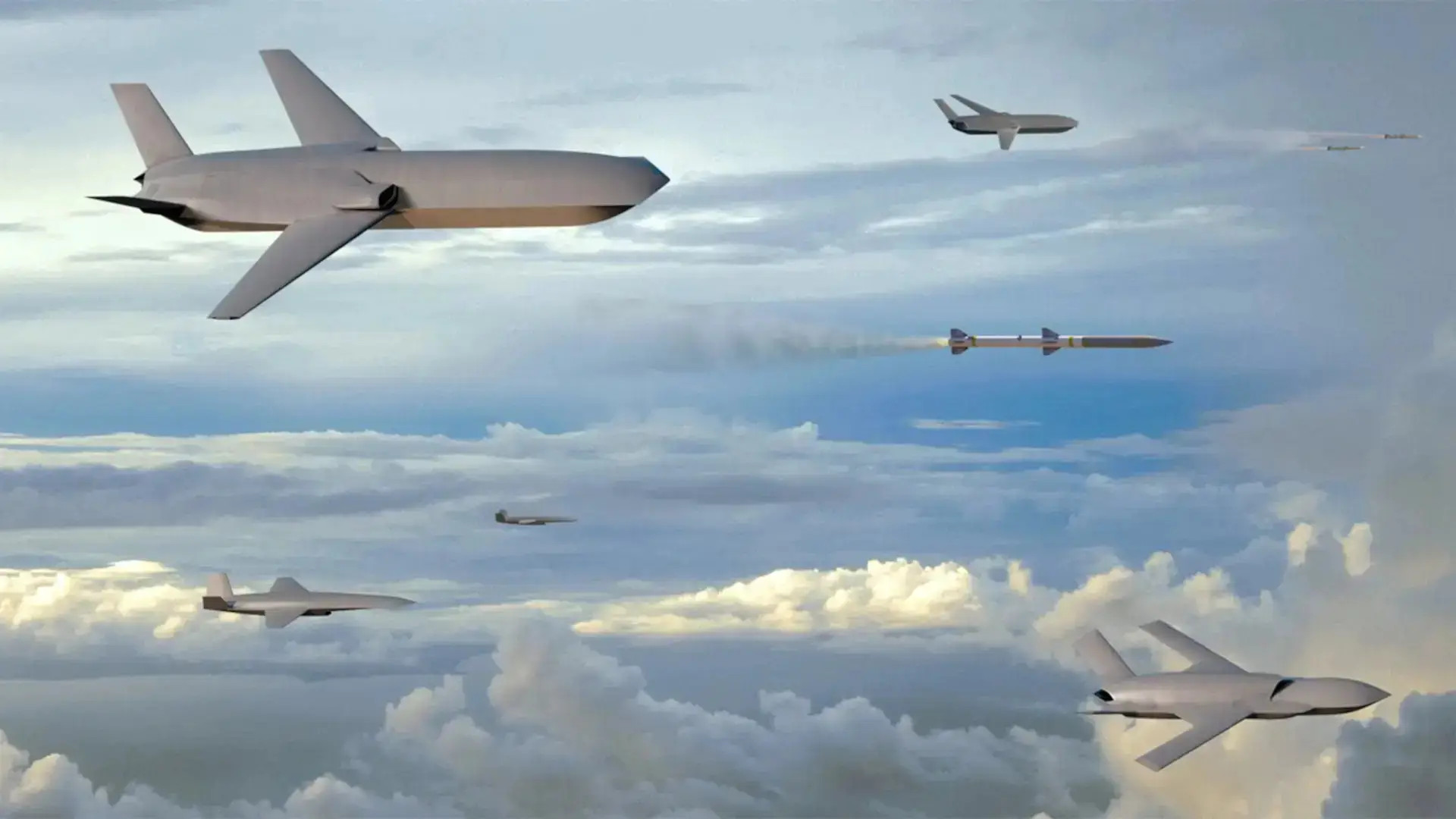
“CCA is much broader than just aircraft. It is a whole host of capabilities that it brings to the Air Force. … So it’s really disruptive of multiple areas,” Jobe added. “There’s a whole plethora of family of systems we can envision in the future that dramatically change the way we do business. How mission threats are closed or not closed can be affected by autonomy [and] not just things that are in aircraft, but also algorithms that work on fusing data, presenting options to battle management [personnel] … trying to make complex decisions in complex environments.”
Jobe specifically highlighted how the CCA program is driving new thinking about data sharing and data management, not just in a tactical sense, but in how the Air Force processes and exploits information from one mission to the next and learns lessons.

“Data and data sharing … [is] another one of those disruptive areas that would have taken us probably a very long time and the old way we used to do things,” he said. “That same operational data can be used for training, briefing, debriefing, [and] planning. So all the people that are involved in these missions now actually have discoverable data that they can go and do analytic work on it.”
That data “has context. What was [sic] the rules of engagement? What was the commander’s intent? How much risk were you allowed to take? What are the objectives? What was the weather like?” Jobe continued. “Those are very important operational sets of data that we traditionally just haven’t collected, and you have to do that if you really want to train … [autonomous systems] in a virtual environment, actually expedite and do iteration.”
This is also relevant in the context mentioned earlier in this story about how iterative development is impacting autonomous capabilities and how that applies to the core CCA requirements. This data could be passed back to Air Force research and development centers and contractors to support work on future CCAs and other capabilities, as well as potentially be used by programmers closer to the ‘tactical edge’ to have more immediate operational impacts.
“If you had all of the last 30 years, with every large force exercise we’ve ever conducted, and we had data tagged and curated, you could actually go in and revisit and relearn those things in a way we’ve never been able to do before,” Maj. Gen. Jobe noted.

All of this “presents a lot of dilemmas to the adversary, potential adversaries. So now you don’t exactly know the scheme of maneuver. [It] could be much different in much different ways than we’ve traditionally done it,” according to Jobe. “So it presents a lot of options for tactical maneuvering and allocation firepower that we just haven’t been able to do before because of the kind of” risk analysis and force packaging that the Air Force has had to do in the past.
CCA’s potential to transform the Air Force isn’t just about how the drones will perform in combat, and how that will impact the Air Force’s tactics, techniques, and procedures, either. This new fleet of uncrewed aircraft will need places to operate from, and accompanying support, on the ground. This, in turn, could look very different from what is needed to support crewed combat aircraft operations, and may need to if the overall concepts of operations are to be successful.
“If you think about the INDOPACOM [the U.S. Indo-Pacific Command area of responsibility], the really big distances out there, you need aircraft that you can ferry around. And if you don’t, you’re getting a big logistics tail just to move between the different bases, right?” Northrop Grumman’s Tom Jones said at the panel talk last week. “So I think you’ll actually see as you get into this that there’s potentially trade points as you trade off range for additional logistics tail for moving things around that needs to be balanced as you look at what the right solution has to meet the requirements.”
In recent years, the Air Force has been very actively developing and refining new concepts of operations centered on future distributed and expeditionary operations with a particular eye toward future operations in the Pacific. What the service is currently calling Agile Combat Employment (ACE), a concept based around the ability to deploy and redeploy in unpredictable ways to various forward locations, including remote and austere sites, is a major centerpiece of these efforts. The War Zone has highlighted in the past how CCAs could present distinct benefits in this larger operational context, especially if they can make use of shorter and/or less improved runways, or are entirely runway independent, and can be more flexibly positioned in forward areas.

“The other important part is, you know, designing a platform that doesn’t need a lot of scheduled maintenance. If you have that in mind, you can set that up in the beginning,” General Atomics’ Alexander said at that same panel talk alongside Jones, adding that it might be possible to develop certain components to last the lifecycle of the drone.
Then there are questions about “How do you do fueling? How do you do weapons loading? All these things that need to be considered ahead of time, so that you don’t get there and then realize you need all this equipment, the people, down range,” Alexander added, stressing the need for a smaller footprint focus for operating CCAs. He also highlighted a need to rethink the “minimum set of equipment and a minimum set of scheduled maintenance” required to support these future drones.
Northrop Grumman’s Jones further suggested that “going to cloud-based ground segments” could help “drastically reduce the [CCA operational] footprint in … austere environments.” At the same time, the Air Force has notably had serious issues with using the cloud-based Autonomic Logistics Information System (ALIS) to support F-35 operations and is still working on acquiring a functional replacement.

In the end, the biggest impact the CCA program may ultimately have is in pushing forward a critical cultural shift within the Air Force.
“People [have] got to start getting comfortable with aircraft being flown by autonomous capabilities, to include [in] our national airspace, which is going to be a huge challenge for us. … that is not something that’s happening anytime soon,” Maj. Gen. Jobe said at the conclusion of his panel talk at the AFA Warfare Symposium last week, adding that he felt a “cultural wind” in this regard is already blowing.
Trust in autonomy has routinely come up in conversations about the CCA program for years now. The culture shift that Jobe said he has been seeing goes well beyond that particular aspect.
“Some would say, ‘I hate looking at pilots and tell[ing] them I don’t want them flying airplanes’ … I would say I want to keep them alive,” he continued. This is a “capability that potentially could threaten pilots flying aircraft in [the] future” but “we owe it to the nation, we owe it to the country, to make sure we deliver the best capability and we can actually fight and win America’s wars.”
Altogether, Air Force officials and industry representatives seem to agree that the CCA program looks set to have significant impacts on the Air Force beyond just the introduction of the drones themselves and could change the entire face of the service.
Contact the author: joe@twz.com
